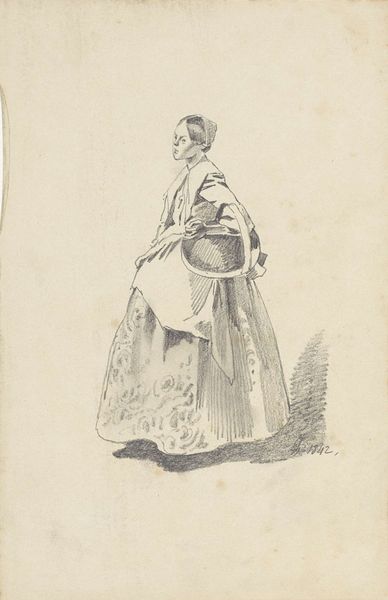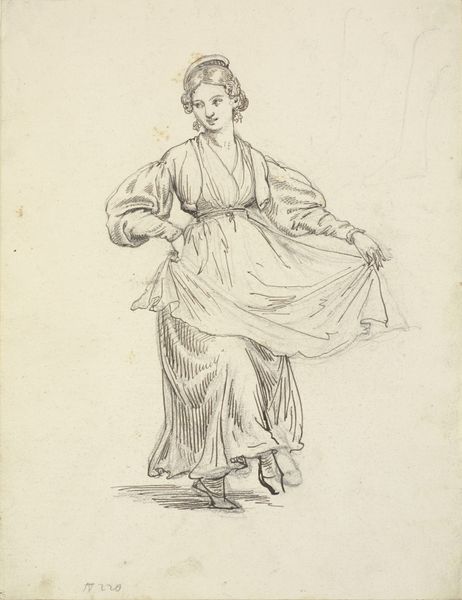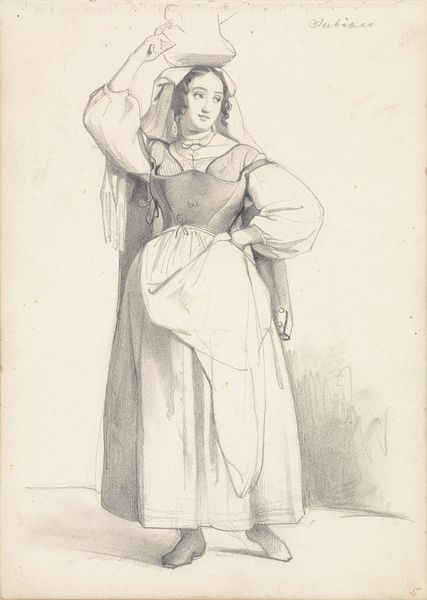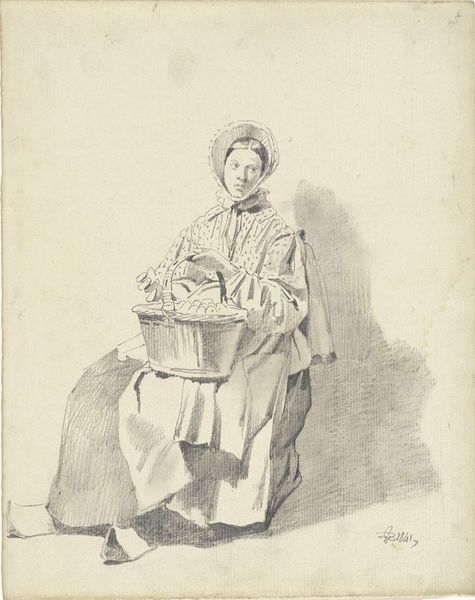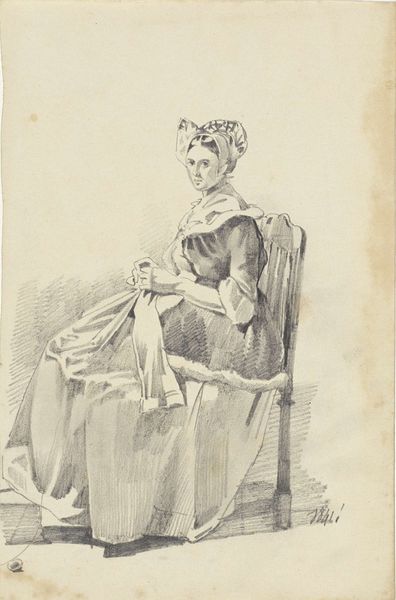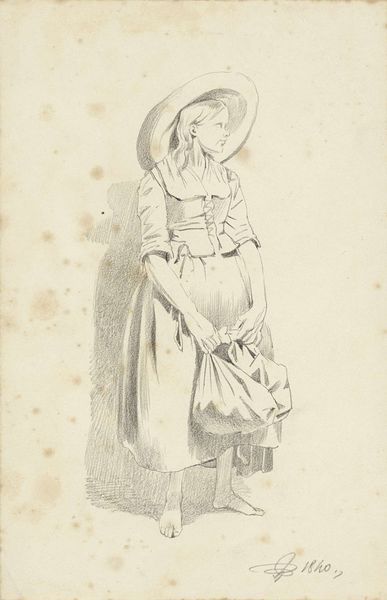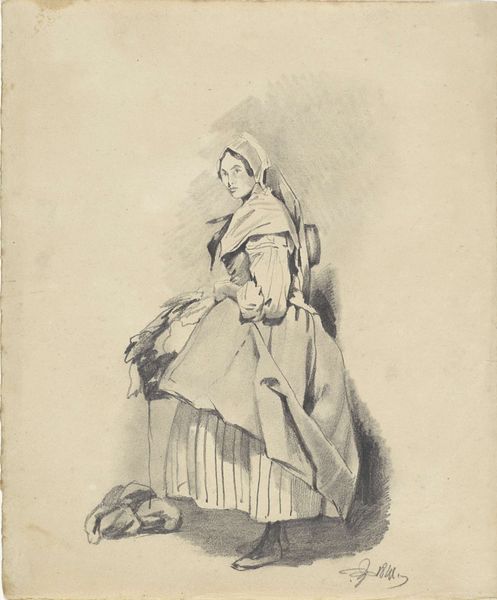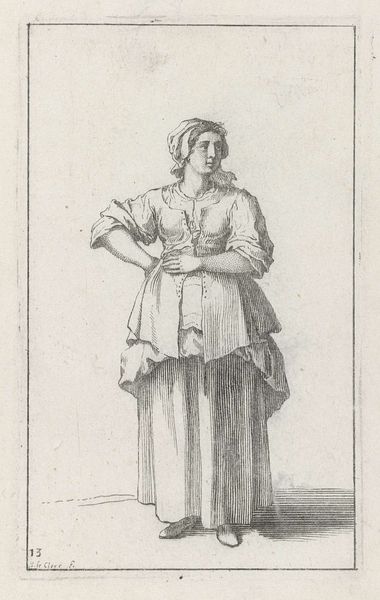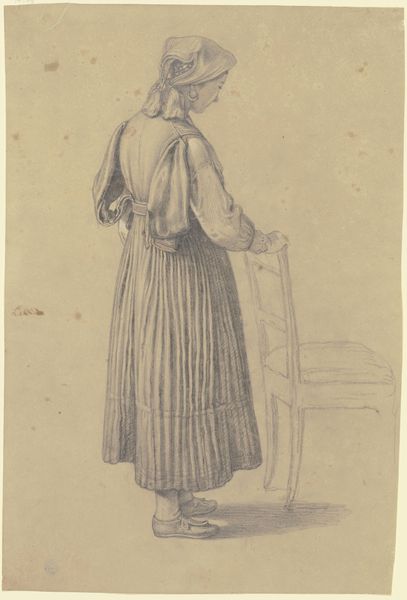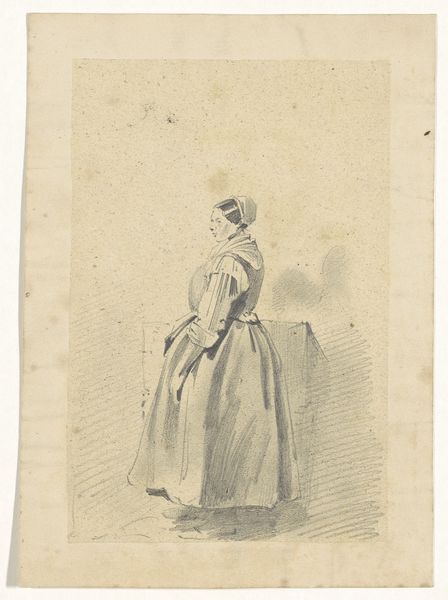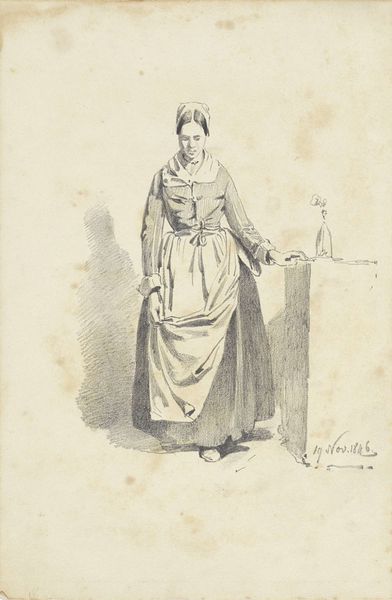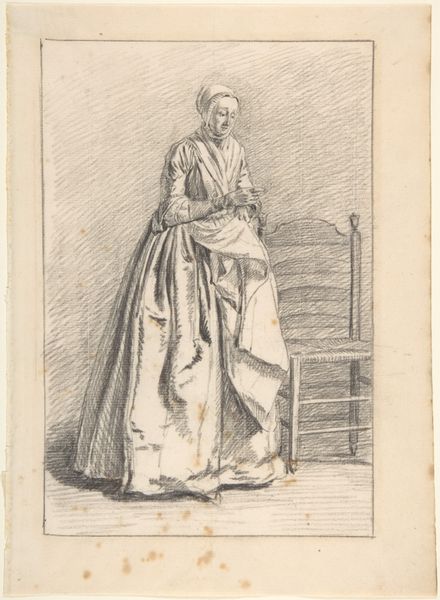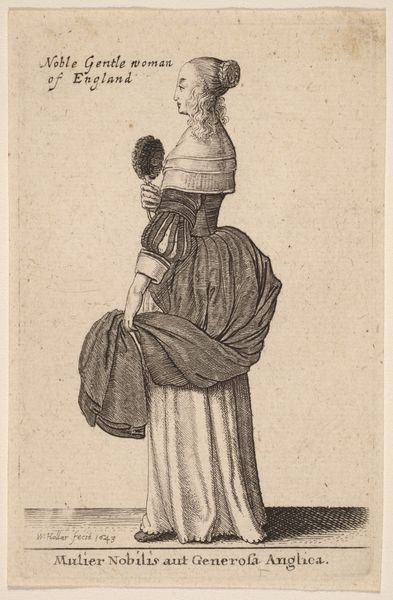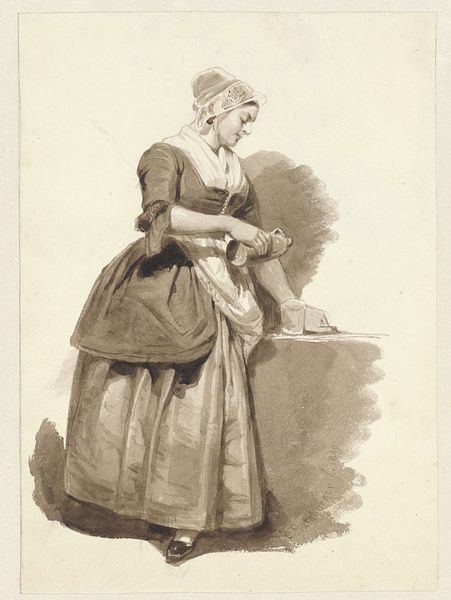
drawing, pencil
#
portrait
#
pencil drawn
#
drawing
#
pencil
#
genre-painting
#
realism
Dimensions: height 240 mm, width 150 mm
Copyright: Rijks Museum: Open Domain
Curator: Looking at this drawing, the first thing I notice is its quiet dignity. It’s a woman holding a basket, rendered simply in pencil. Editor: Yes, it's striking how such humble materials convey such a grounded presence. This work is "Standing Woman with Basket, Seen from the Front" by Pieter van Loon, dating from 1840. It's part of the Rijksmuseum's collection. What strikes you about it from a material perspective? Curator: The use of pencil alone speaks volumes about accessibility and the everyday. This wasn’t an extravagant commission demanding precious materials. Instead, it’s a readily available tool, perhaps suggesting the artist was interested in documenting a type, a person who perhaps couldn't afford a formal portrait. Editor: Precisely! This work is firmly rooted in its time. Consider the rise of Realism and the increasing artistic interest in portraying everyday life and ordinary people. It presents us not with idealized beauty, but a study of the working class in the Netherlands. The question becomes, what was the purpose? Who was the audience for these works? Curator: Perhaps it served as a form of social documentation, contributing to the visual culture surrounding class and labor. The basket itself could be further examined: what kind of wares would have been carried in such a container? What can its specific construction and wear and tear tell us about its role in the woman's labor? This artwork becomes an opportunity to understand both artistic strategies and social dynamics through tangible things. Editor: I agree. Van Loon's sketch participates in broader artistic movements exploring labor. Did such imagery challenge existing hierarchies, or perhaps even reinforce them through objectification? Consider, too, how art institutions today present and frame these works: who gets to see it, and how do they perceive this woman and her world through that lens? Curator: Absolutely. When examining works such as this, it's impossible to separate the image of working people from how and why artists made these works in the first place. Editor: It’s a potent reminder that art is both a product of its time, and a continuous negotiation between image, audience, and power.
Comments
No comments
Be the first to comment and join the conversation on the ultimate creative platform.
